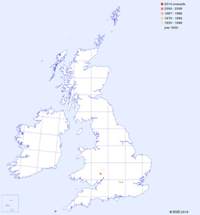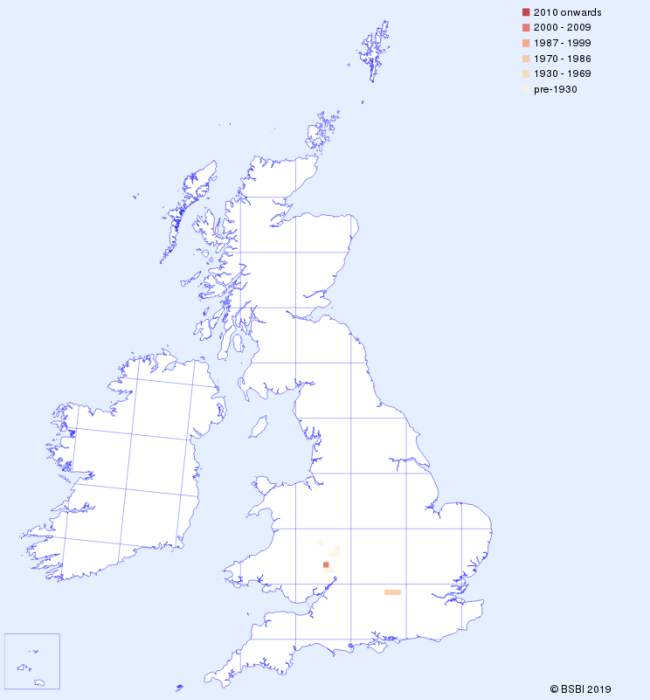So much has been written about this plant, the Holy Grail of orchid-hunters, that it is difficult to add much. It is classified in Britain as Critically Endangered. The Ghost Orchid 'flirts' with extinction, and every time we think we've seen the last of it somebody finds it again. Originally recorded in 1854 on the border of Hereford and Worcester, there have been considerable gaps in subsequent reports with the last one occuring in 2009 just after it had finally been declared extinct. The Ghost Orchid is dependent throughout its life on a relationship with a fungus because, being devoid of chlorophyll, it is unable to produce the nutrients it requires for survival. The Ghost Orchid grows in dark oak woodland, where it emerges from a deep mat of decaying leaves. It has, however, been known to occur in rather lighter conditions, but it would probably not survive for long in competition with the other plants that quickly colonise brighter habitats. In mainland Europe this orchid has a range extending from Scandinavia in the north to Greece and Italy in the south. It is rare and declining in numbers throughout its range.
| Distribution Map | Key Features | |
 |
Records for the Ghost Orchid from BSBI are shown on the map with most recent in front. (Hover the mouse over the small map to expand it.) |
Plant: up to 12cm but exceptionally over 20cm. Stem translucent white washed pinkish-brown, swollen at the base. Above the uppermost flower the stem extends to a curious small non-flower bearing 'spur'. |
Image Gallery for Ghost Orchid Epipogium aphyllum
| Pollination | Taxonomy & Hybrids |
Little is known for sure, but it may be that the flowers are pollinated by bees although their shape does not appear to be a good 'fit' for the purpose. Self pollination while the flowers are still in bud and therefore the 'right way up' for pollen to descend to the fertile surface has been suggested, and vegetative reproduction may also take place. |
The specific name aphyllum means 'without leaves'. |
Articles about Ghost Orchid in JHOS
Cole, S. (2015) The Ghost Orchid in England – a History: Part 2 – the Chilterns. Journal of the Hardy Orchid Society 12(1):12-22.
Cole, S. (2014) The Ghost Orchid in England − a History: Part 1 − the West. Journal of the Hardy Orchid Society 11(4):124-129.
Spencer, J. (2006) Chasing Ghosts.Journal of the Hardy Orchid Society 3(1):22-24.
